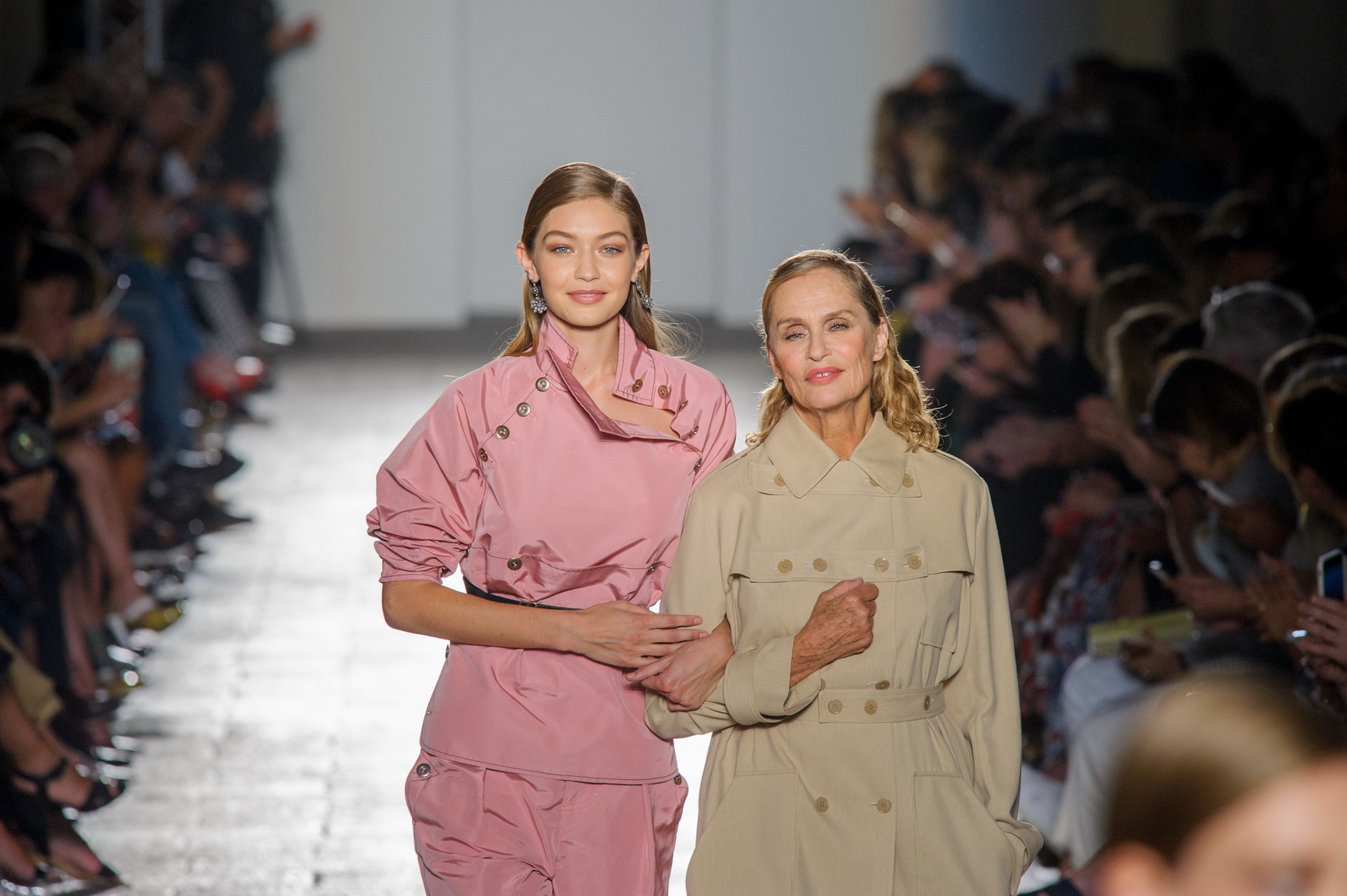There’s nothing like an anniversary show to get the emotions going in the normally so unimpressed show-goers. This season it came courtesy of Bottega Veneta, who celebrated its 50th birthday to a standing ovation in Milan’s appropriately stucco-colored Accademia di Brera. Lauren Hutton walked the runway mid-show in a beige trench coat, nodding to Bottega Veneta’s history on the silver screen, which she became part of when she carried one of its bags in American Gigolo. Before the addition of ready-to-wear in the late 90s, Bottega Veneta was a bag company — the bag company, for the chicest women of the world, from Jacqueline Onassis to the Empress of Iran. Under the reign of Tomas Maier, who presented his first women’s show for the house in 2005 and menswear the year after, Bottega Veneta has always been about embracing a broad clientele. Sure it’s mile-high luxury at its finest, but anyone with a piggy bank big enough can join in. That’s why his anniversary show merged his women’s and men’s collections, and why the cast was the most diverse in Milan. “I dislike any classification, if it’s about skin tone or age, whatever. It’s something I detest,” he insisted backstage.
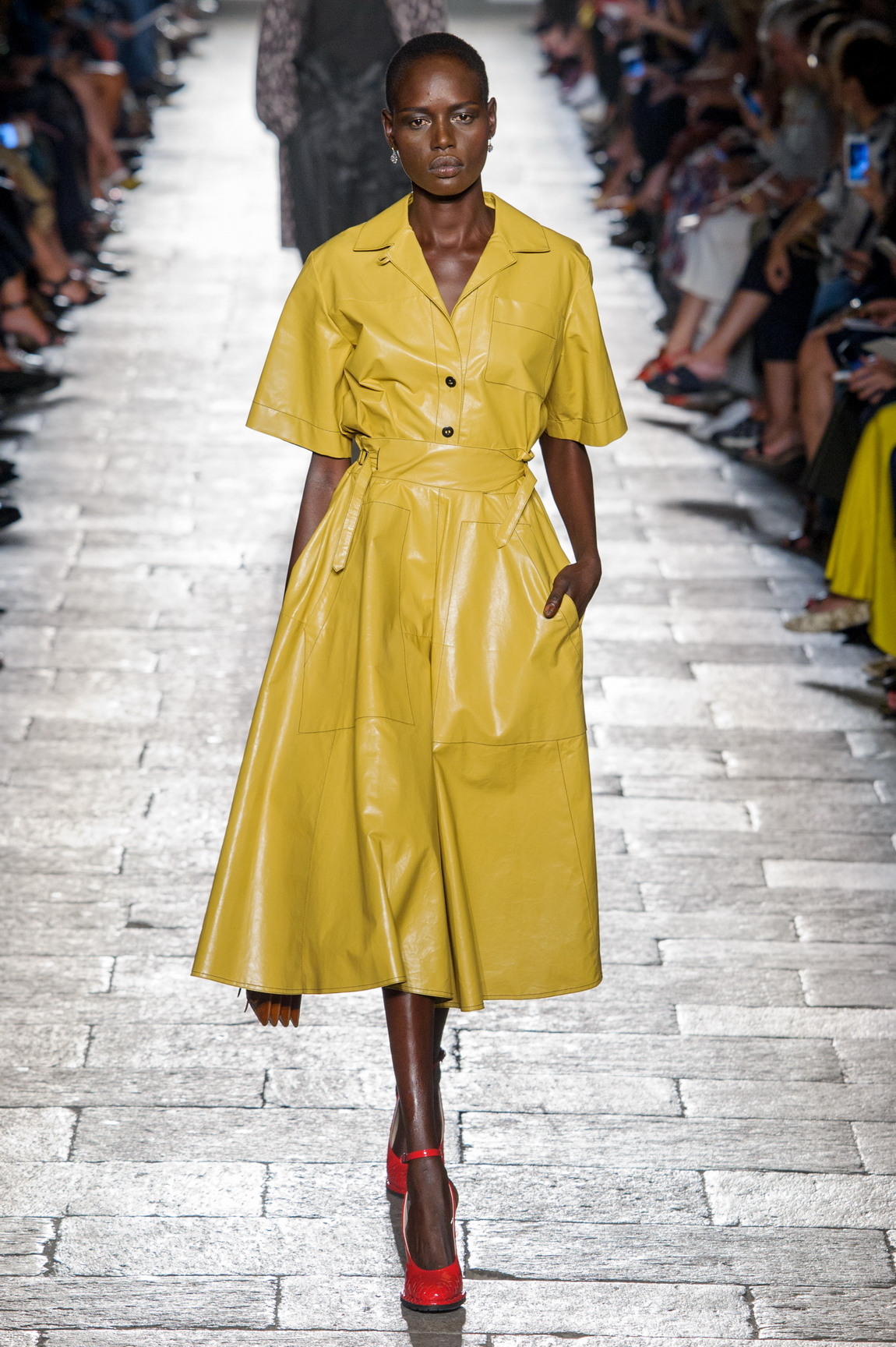
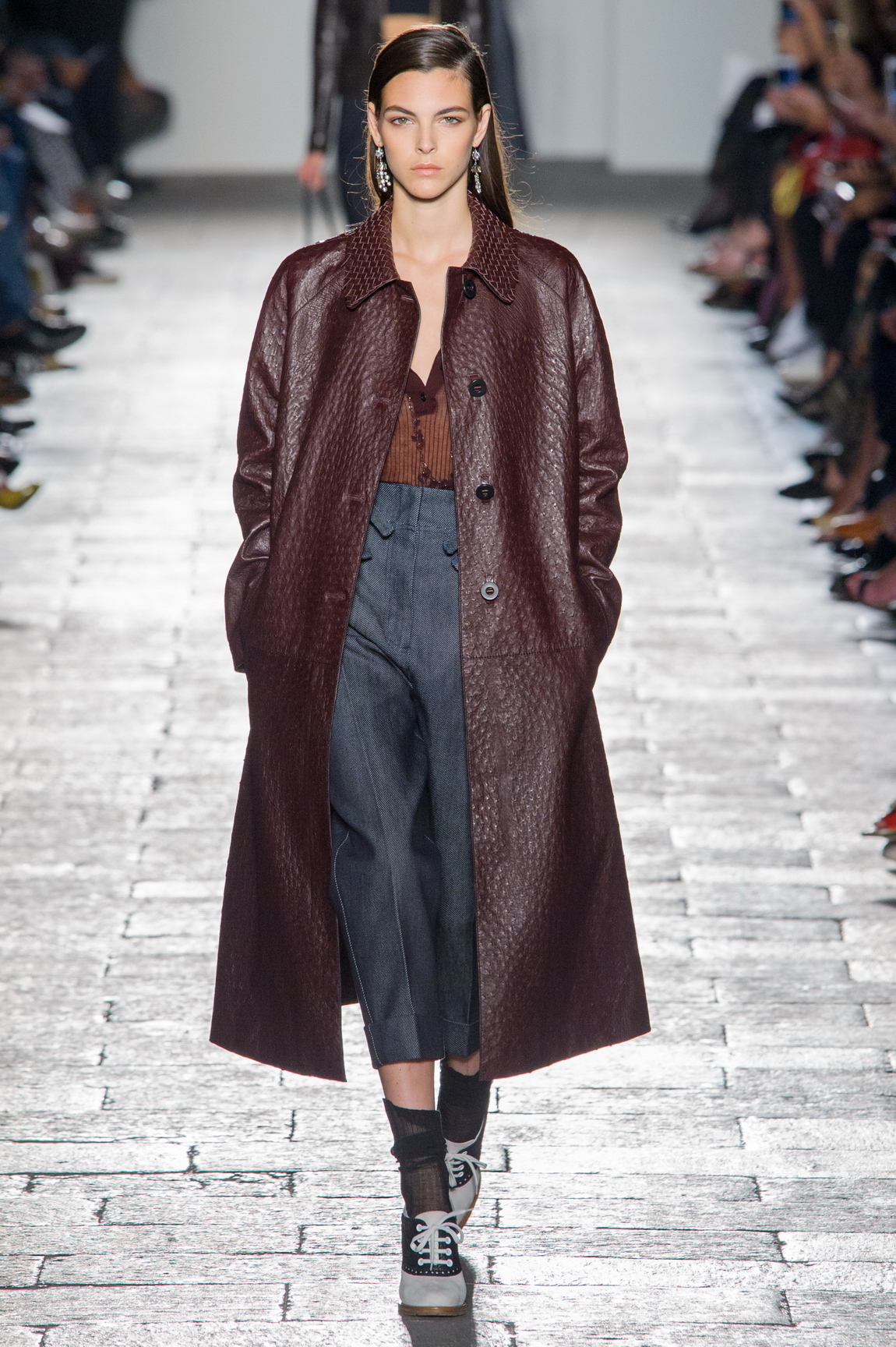
“This showcase doesn’t mean you have to be sixteen and it doesn’t mean that you have to be fifty — it’s nonsense. You need to be confident and you need to like that quiet thing.” Above all, the ready-to-wear Maier has developed for Bottega Veneta has always reflected the quiet luxury of its accessory legacy. This collection didn’t have a single showpiece in it, but in its impressive craftsmanship, fabrication and technique every look could be a showstopper. “It’s not in-your-face. I think it’s for somebody who’s a little bit cultivated and about clothes, and understands what the difference is when a shirt is beautifully made: the materials, the little details,” Maier explained. Asked about his collection, a parade of essentially classic, stripped-down garments kept in Bottega Veneta’s trademark autumnal colors, he began to list the type of pieces we’d seen, almost as if he was secretly smiling a little bit at fashion’s willingness for finding meaning in every sock and shoe.
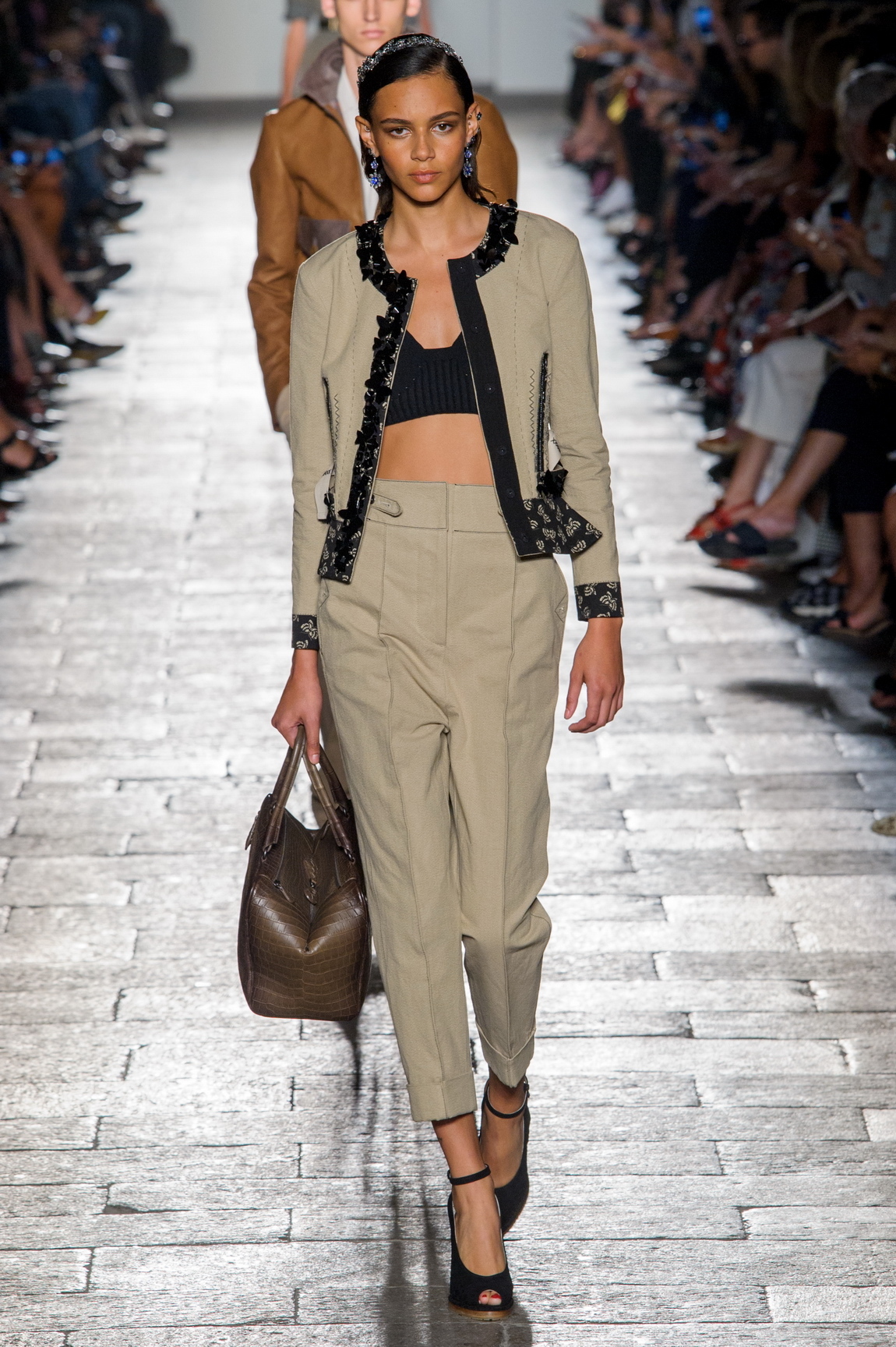

“For women, the pant and the shirt, the sweater and the skirt, the dress… I think there’s not very much to say about them; ‘nothing pieces’, but they’re beautiful. Very light and un-embellished.” They were brave words in this day and age of fashion where putting on a show — let alone an anniversary show — comes with the expectation of communicating a certain statement. For Maier, however, the message was the non-message that lies at the core of Bottega Veneta: all-embracing, no-fuss luxury. But by putting on the kind of show he did, with models from Hadid to Hutton and men’s and womenswear shown together, Maier flexed a pretty forward-thinking fashion muscle for this discreet 50-year-old house. Next season, brands like Vivienne Westwood and Gucci will follow troop with their own co-ed shows, a wave that will no doubt serve to highlight the need for diversity on the runways even more, whether it’s about race or age or sexual identification. “I think I will continue to do that,” Maier said when asked about his fusion of men’s and women’s. “I think it makes sense for us as a company. Companies that do women’s-for-men collections — why not? The collections are always thought out together. I design both collections the same: the first choice is the material, color, and then we may shoot off into more feminine and masculine.” Maier may not have wanted to make a big social or political statement with his anniversary show, but in his understanding of Bottega Veneta and the role it plays in fashion, he very much did.
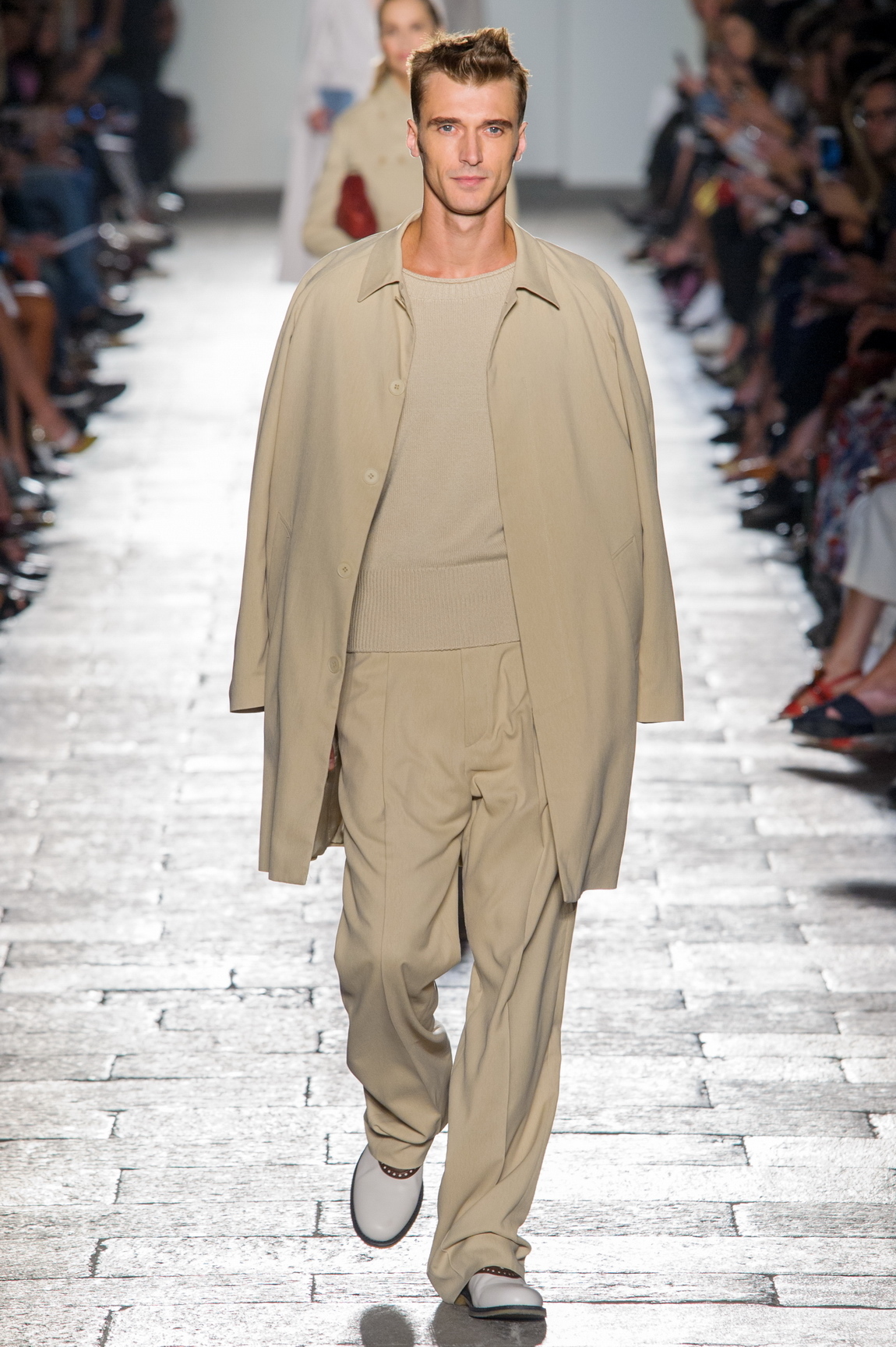
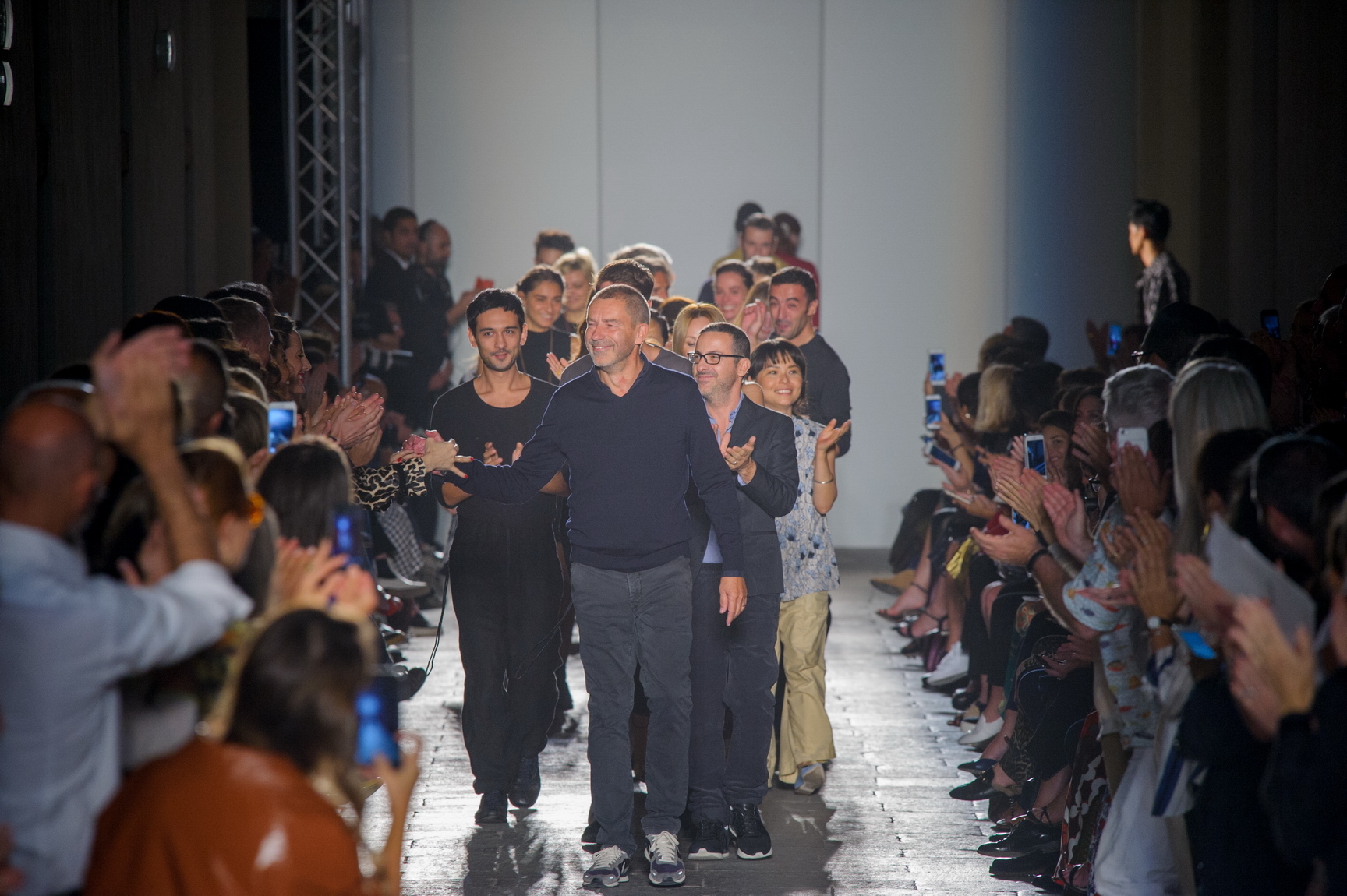
Credits
Text Anders Christian Madsen
Photography Mitchell Sams
